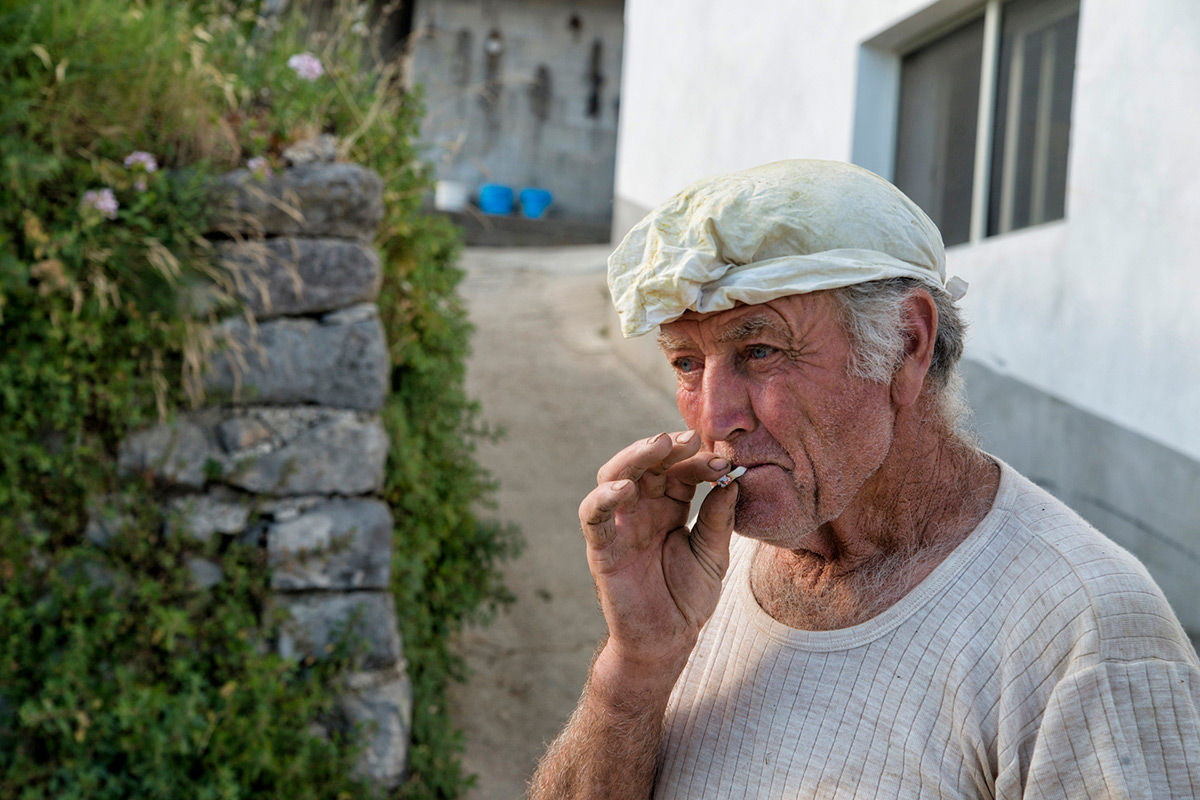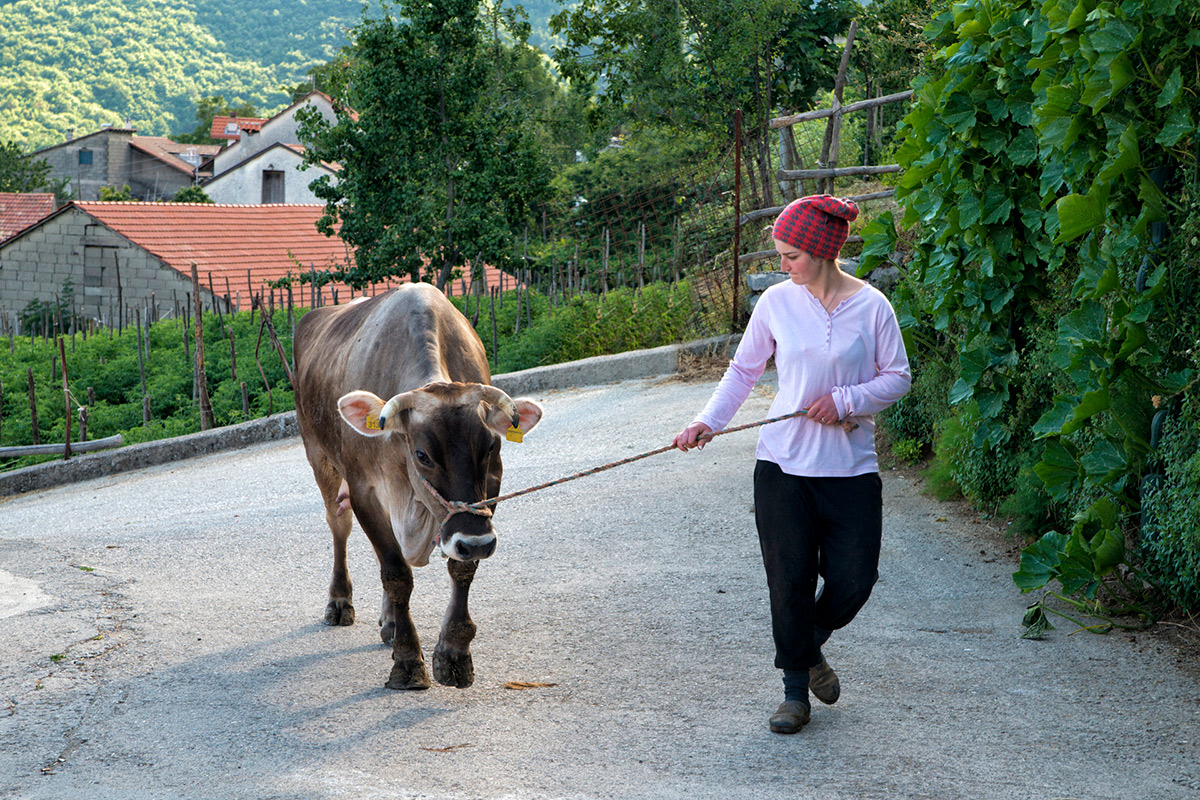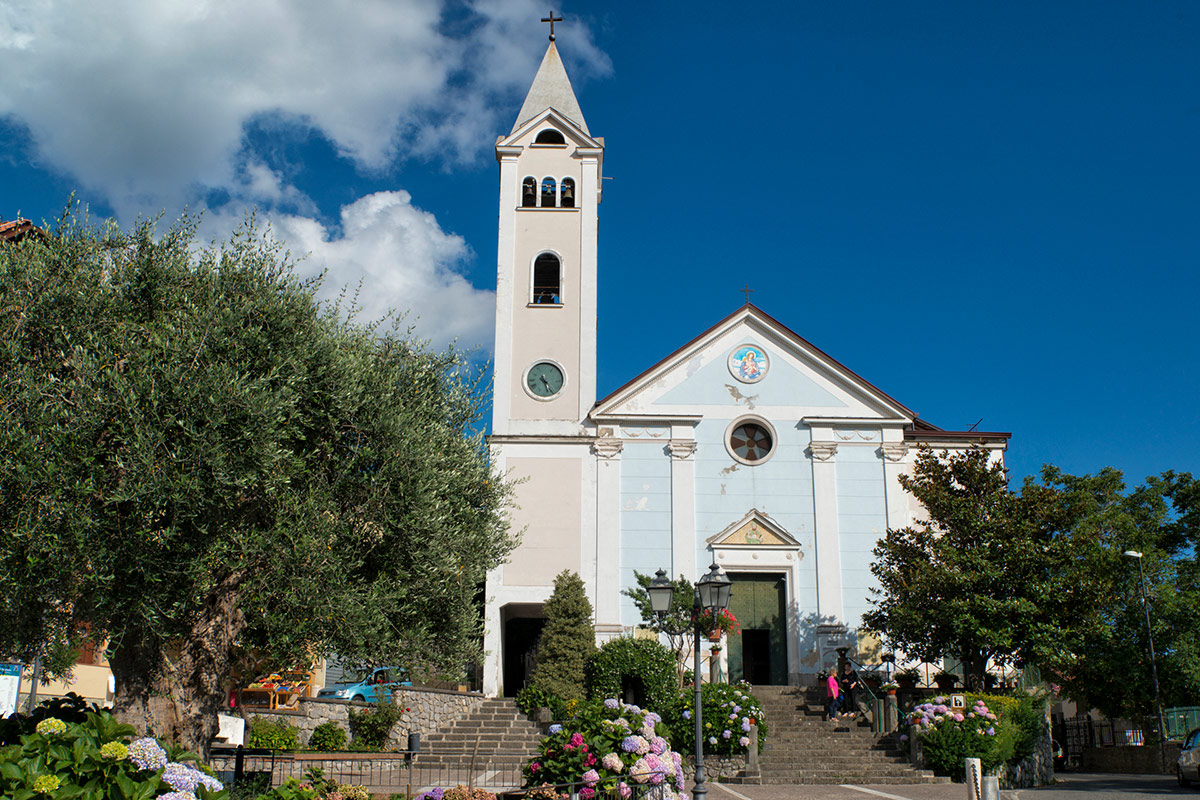 Dense woods covered the plateau nestled between the Lattari Mountains when the first human settlement appeared in the middle of the Iron Age. Already the inhabitants of Oscan culture of that time, but even more those of the following centuries, had the need to steal some land to cultivate from the vast wooded mantle. And nature revealed to be generous for agriculture and for breeding, widely practiced in the imperial age, when in the area many rustic villas were found and milk and dairy products coming from the Lactarii Montes were very renowned. It was probably from ager, (meaning “field”), that the toponym Agerola derived, to identify the five small communities of the hilly area overlooking the beauties of the Amalfi Coast, which ended up buried by the ashes of the eruption of Vesuvius in 79 AD, facing a period of depopulation.
Dense woods covered the plateau nestled between the Lattari Mountains when the first human settlement appeared in the middle of the Iron Age. Already the inhabitants of Oscan culture of that time, but even more those of the following centuries, had the need to steal some land to cultivate from the vast wooded mantle. And nature revealed to be generous for agriculture and for breeding, widely practiced in the imperial age, when in the area many rustic villas were found and milk and dairy products coming from the Lactarii Montes were very renowned. It was probably from ager, (meaning “field”), that the toponym Agerola derived, to identify the five small communities of the hilly area overlooking the beauties of the Amalfi Coast, which ended up buried by the ashes of the eruption of Vesuvius in 79 AD, facing a period of depopulation.


An integral part of the Maritime Republic and then of the Duchy, Agerola supplied Amalfi with its agricultural products and the timber needed for the arsenals, also taking advantage of the flourishing trade with the East for which its precious silk fabrics were destined. Then, incorporated into the Kingdom of Naples, it offered safe and inaccessible shelters to bands of brigands that raged in the mountains, until in the eighteenth century, with the advent of the Bourbons, it experienced a new spring and a significant demographic increase, which was accompanied by a strong regression of banditry. Nonetheless, Agerola was the scene of the first revolutionary ferments in favor of the Neapolitan Republic and, later, it saw the birth of Carbonarian cells in favor of the Unification of Italy. Shortly before this took place, administrative separation from the Amalfi area and the province of Salerno took place, to become one of the border territories of the province of Naples. In the meantime, the hamlets of the scattered Municipality of Agerola had become six: Bomerano, where the famous Path of the Gods begins, Campora, Pianillo, where the municipal seat is located, Ponte, San Lazzaro and Santa Maria.
The beauty of the Coast and of the Gulf of Salerno can be enjoyed from the Lauritano Castle, dating back the golden age of the Amalfi Republic, standing out in the green of the rich vegetation surrounding it for its bright coloured limestone rock.
 Each of the varied villages making up Agerola has its own parish church, synthesis of centuries of popular faith, also proved by the art works and devotion. The largest church is in the square of Bomerano and is dedicated to Saint Matthew the apostle. From 1580, with a Latin cross, it has a full frescoed vault and an eighteenth-century painting representing the face of the Virgin of the Rosary. In the village centre of Pianillo, the church of Saint Peter the apostle stands, the centre of the cult of Agerola’s Patron Saint: Sant’Antonio Abate. From the Sixteenth century, with a Latin cross and three naves, remodeled several times, it has been the seat of various archconfraternities over the centuries. On the right there is a fourteenth-century bell tower, culminating IN a dome of polychrome majolica. Parish of Santa Maria is the church of Santa Maria La Manna of the thirteenth century, with a Latin cross and three naves, which houses the thirteenth-century marble statue of the Madonna della Manna, the work by Nicola di Monforte, from which some blue liquid has flowed. The contemporary bell tower is dominated by a yellow and green majolica dome. The church of Santissima Annunziata is the parish seat of San Lazzaro, which takes its name from the painting of the Annunciation on the main altar. With three naves, it houses a fourteenth-century double-sided marble cross; the bell tower is surmounted by a dome with a lantern. Born as the burial place of the Acampora family, among the richest of Agerola, in 1680, the church of Saint Michael the Archangel in the hamlet of Campora, with a single nave and Baroque style, it houses a seventeenth-century painting of the Saint by Andrea Malinconico. The church of San Nicola di Bari, in the village of Ponte, houses an altarpiece by Andrea Vaccaro. The church of San Martino and the church of All Saints (Tutti i Santi ) must be visited as well.
Each of the varied villages making up Agerola has its own parish church, synthesis of centuries of popular faith, also proved by the art works and devotion. The largest church is in the square of Bomerano and is dedicated to Saint Matthew the apostle. From 1580, with a Latin cross, it has a full frescoed vault and an eighteenth-century painting representing the face of the Virgin of the Rosary. In the village centre of Pianillo, the church of Saint Peter the apostle stands, the centre of the cult of Agerola’s Patron Saint: Sant’Antonio Abate. From the Sixteenth century, with a Latin cross and three naves, remodeled several times, it has been the seat of various archconfraternities over the centuries. On the right there is a fourteenth-century bell tower, culminating IN a dome of polychrome majolica. Parish of Santa Maria is the church of Santa Maria La Manna of the thirteenth century, with a Latin cross and three naves, which houses the thirteenth-century marble statue of the Madonna della Manna, the work by Nicola di Monforte, from which some blue liquid has flowed. The contemporary bell tower is dominated by a yellow and green majolica dome. The church of Santissima Annunziata is the parish seat of San Lazzaro, which takes its name from the painting of the Annunciation on the main altar. With three naves, it houses a fourteenth-century double-sided marble cross; the bell tower is surmounted by a dome with a lantern. Born as the burial place of the Acampora family, among the richest of Agerola, in 1680, the church of Saint Michael the Archangel in the hamlet of Campora, with a single nave and Baroque style, it houses a seventeenth-century painting of the Saint by Andrea Malinconico. The church of San Nicola di Bari, in the village of Ponte, houses an altarpiece by Andrea Vaccaro. The church of San Martino and the church of All Saints (Tutti i Santi ) must be visited as well.




Comments powered by CComment